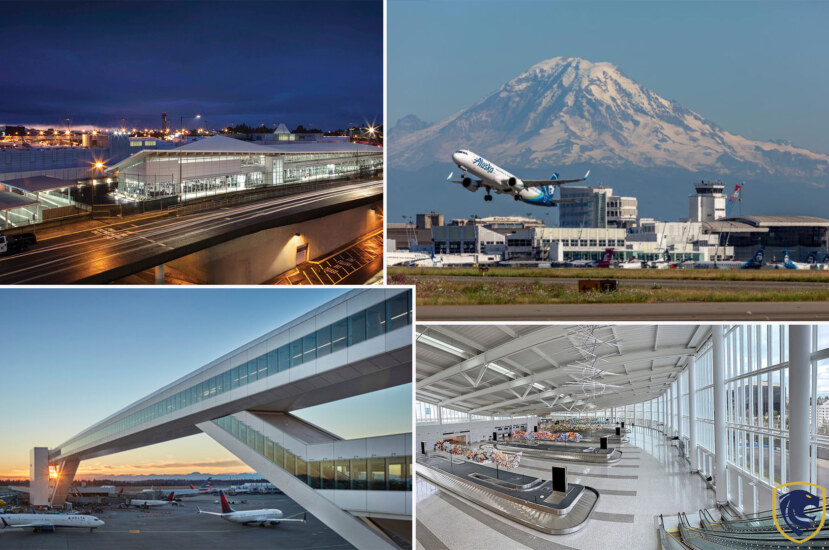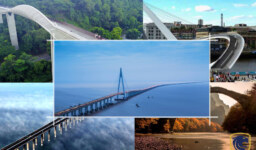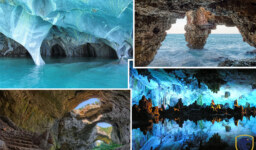The main commercial airport that serves the Seattle metropolitan region in the U.S. state of Washington is Seattle-Tacoma International Airport. It is located in the SeaTac neighborhood of Seattle.
The entire airport is substantially smaller than most U.S. airports when comparing the yearly passenger counts, at 2,500 acres. Flights from the airport go to North America, Oceania, Europe, the Middle East, and Asia destinations. Moreover, It is Alaska’s main transportation center.
Alaska Airlines, whose corporate offices are close to the airport, uses it as its primary headquarters. Delta Air Lines, which has grown at the airport since 2011, uses it as a headquarters and a gateway to the rest of the world. In SEA as of 2022, 31 airlines are in operation, flying to 91 local and 28 foreign destinations.
Constructions

Constructions
When the US military took over Boeing Field in World War II, the Port of Seattle was rebuilt with this airport. Northwest and Trans-Canada operated the first regularly scheduled flights in 1947. Western and United left Boeing Field a few years later to land at this airport. Moreover, Pan Am followed from 1952–1953. Nevertheless, West Coast and its successor airlines, Air West and Hughes Air west, remained at Boeing Field until 1971. Herman A. Moldenhour, an architect, created the initial terminal. On July 9, 1947, in front of 30,000 spectators, the ceremonial opening ceremony was held.
This airport contains three parallel runways. One is 16L/34R, which is 3,627 meters long. Also, 16C/34C, which is 2,873 meters long; and 16R/34L, which is 2,591 meters long is there to facilitate flights.
The renovation project
In 2003, Curtis W. Fentress of Fentress Architects completed an expansion and renovation project for the airport’s Central Terminal building. The new runway runs parallel to the existing two and is situated 2500 feet west of runway 34R, enabling landings on both under limited visibility. The problem with the older runways is that they are too close together for usage in limited visibility.

The renovation project
Delta Air Lines made intentions to turn Seattle into a transpacific gateway public in 2014. To support those services, Delta has now added a significant number of local and international flights. Several industry observers believe that Delta’s growing presence in Seattle is a reaction to United Airlines’ transpacific hub in San Francisco as well as Delta’s dissatisfaction with its prior Tokyo-Narita hub. American Airlines started building a hub at the airport in late 2021, soon after Alaska Airlines joined American Airlines in the One world alliance, to service locations in the Asia Pacific area.
When it was established in 1973, the North Satellite Terminal had only seen a few renovations. So, it required refurbishment. The Port of Seattle’s North Satellite Reconstruction Plan initially considered just modernizing the terminal. The Port stated in 2016. According to the plan, the terminal will also undergo considerable expansion.
The North Satellite’s size was expanded by 201,000 square feet. In addition, an additional eight gates are established, bringing the total number of gates to 20. The first phase of the project, which was finished on July 11, 2019, included eight gates, a mezzanine level with restaurants, and an Alaska Airlines rooftop club. In addition, it extended the terminal to the west by 73 m. The second phase expanded the cafeteria and retail space.
Improving Customer Experience

Improving Customer Experience
The new arrival facility’s principal objective was to enhance the passenger experience. Moreover, it is established to provide a warm environment for visitors. The IAF immerses visitors in the surrounding Pacific Northwest scenery.
Passengers receive 360-degree views of Mount Rainier, the Olympic, and Cascade mountain ranges as they stroll along the lofty aerial walkway. Even more unusually, the boardwalk crosses a busy taxiway. That allows visitors to observe airplanes taking off and landing from below.
According to Lance Lyttle, Managing Director of Sea-Tac, “This is a brand-new welcome to their country. This is an amazing customer experience in every manner.
Grand Hall Artwork & Elements of the Northwest
The architecture of the Seattle Tacoma International Airport is nothing but mesmerizing. There are some features that make everyone sad to leave the airport. The corridor of the airport leads to the Grand Hall of the IAF, a large room with floor-to-ceiling windows. The hall is adorned with artwork, such as “Magnetic Anomaly,” a trio of kinetic sculptures by Ned Kahn that hang above the ceiling. In addition, “Chalchiutlicue,” which is a vibrant five-piece sculpture by Marela Zacaras hovers above the baggage claim carousels.

Grand Hall Artwork & Elements of the Northwest
The plants, geography, and other features of the Pacific Northwest region have been the inspirations in other parts of Grand Hall. Moreover, the entrance portals are lined with Douglas fir. Also, the hall has a terrazzo floor with regional stones.
Together with a little forest of evergreen trees that ends at ground level in a groomed watercourse with native plants and shrubs tucked between granite slabs, passengers leave the passport control area.
Eight international airplane gates now have direct access to the IAF through the new, secure international corridor along the face of the existing A Concourse. This increases the structure’s future adaptability and allows for dual usage for domestic flights.
Terminal facilities

Money exchange facility
Money
The main terminal building is equipped with bureaus that change money. In addition, this area consists of ATMs, and change machines. Moreover, currency exchange services are available at the South Satellite Terminal and on Concourse A.
Food
The Seattle-Tacoma International Airport is home to a large number of coffee houses, pubs, and a range of self-service, full-service, and fast-food restaurants. These are scattered across the concourses, satellites, and main terminal areas. You can experience a great meal in this airport if you step up to this area.

Food
Shopping
The majority of the shopping options, including book stores, gift shops, and duty-free shops for international travelers, are found at the Central Terminal.
A luggage and storage service is available at Seattle-Tacoma International Airport’s baggage claim area.
Airport Facilities
Meetings & business conferences
The Conference Center at Seattle-Tacoma Airport offers a variety of meeting and conference spaces on-site. Moreover, the Hilton Seattle Airport & Convention Center, a short distance from the airport offers additional meeting facilities. A variety of office supplies are available for visitors at the Regus Business Center Express on Concourse C.

Meetings & business conferences
Communication Services
Communication services include internet-enabled payphones and free Wi-Fi throughout Seattle-Tacoma International Airport. In addition, there are several post boxes at the terminal. In addition, there are spots to charge your phone.

Facilities for people with disabilities
Facilities for people with disabilities
Special facilities are available at Seattle-Tacoma International Airport, including ramps, special phones for the deaf, and adapted elevators with Braille letters. Also, wheel chairs are available upon request from airline employees. The multistory parking lot has designated disability parking places that are dedicated to them. Those travelers who might need further help are recommended to get in touch with their airline before departure.




